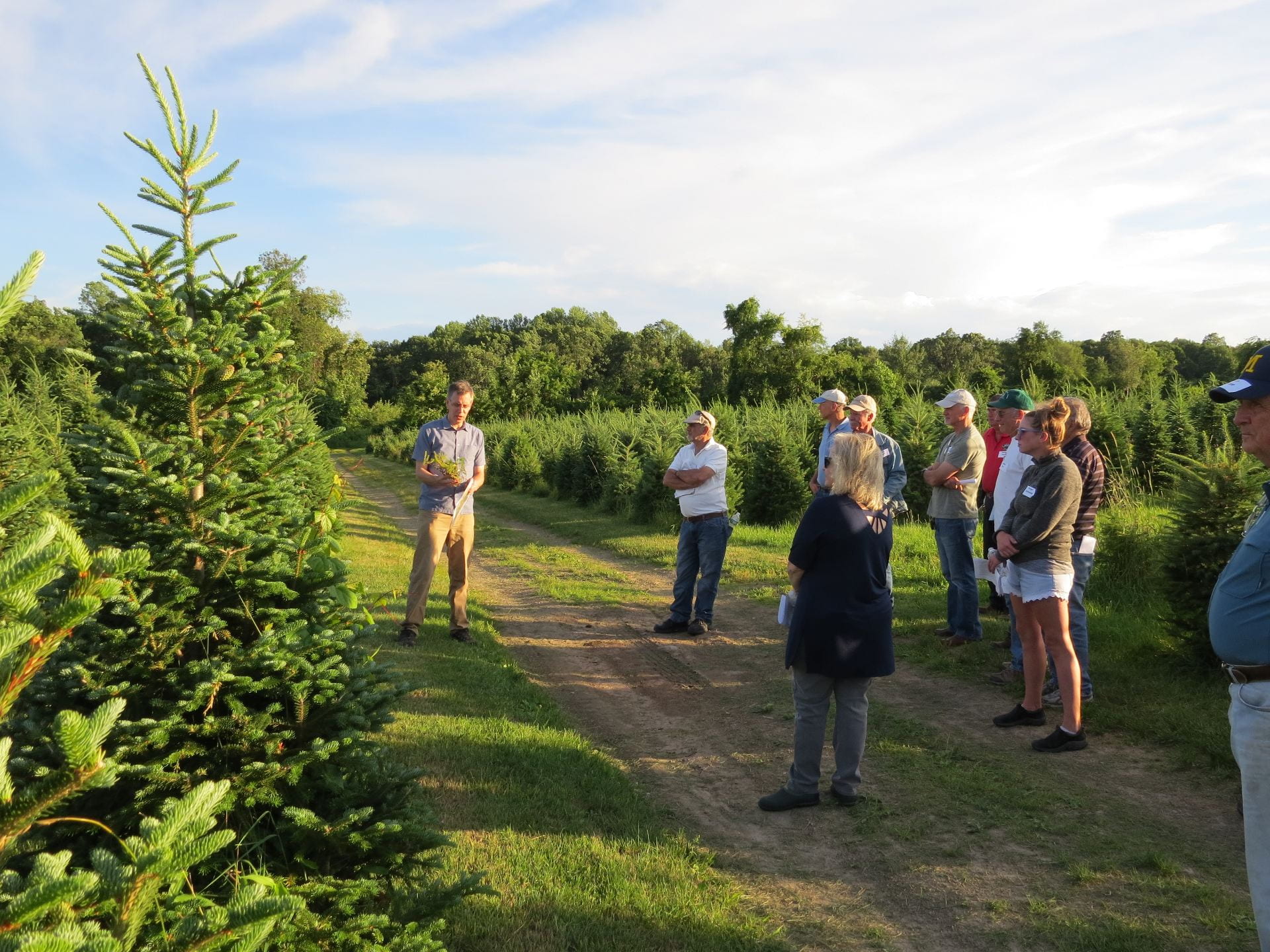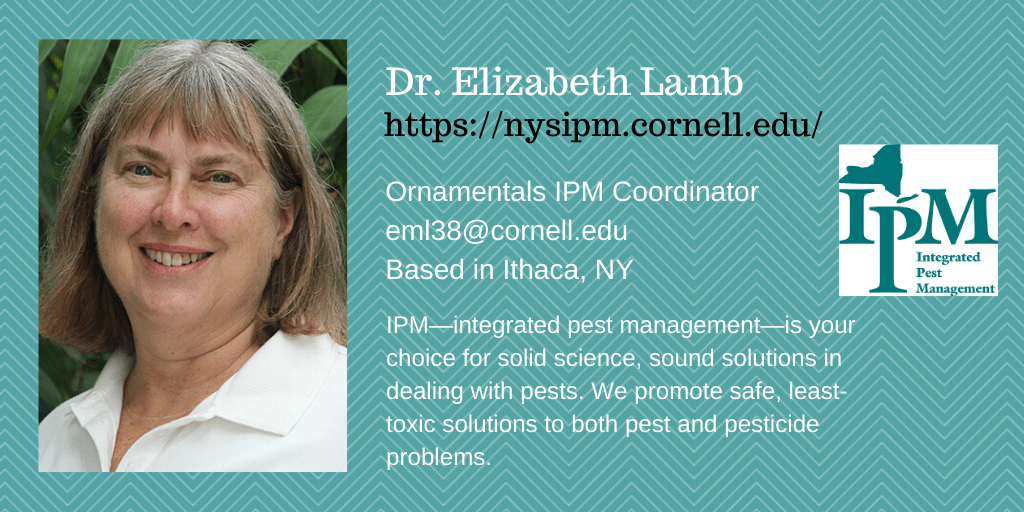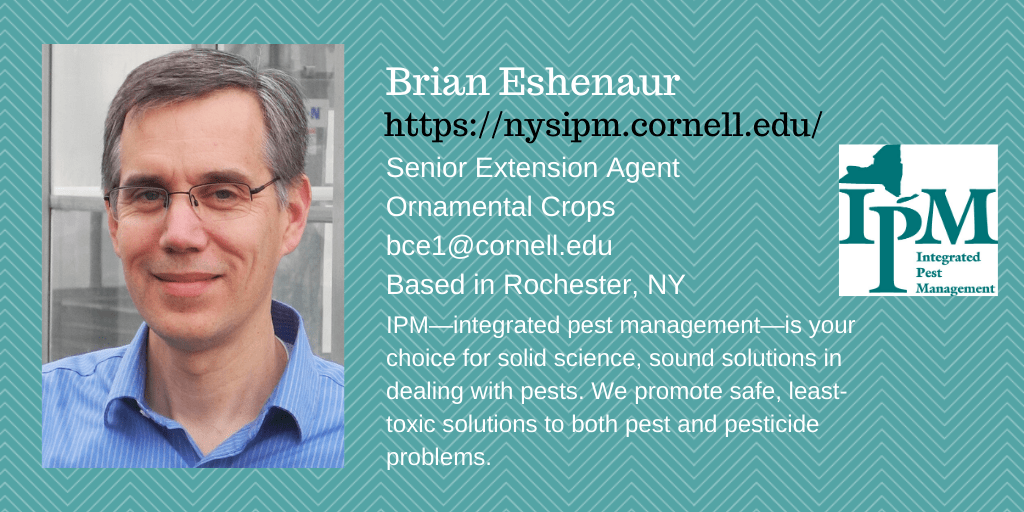Over the last 25 years, Douglas-fir trees have been the backbone of NY’s Christmas tree industry. Well-loved by buyers for sturdy branches, soft needles, and needle-retention, this popular tree is appreciated by growers for its quick growth, adaptability to various soil conditions, and tolerance of increasingly hot summers. Lately, however, some Christmas tree farmers are moving away from Douglas-fir because of a needlecast disease requiring management by fungicide applications. Others continue to plant it—sprays and all—due to its resistance to deer damage, and its resilience in a changing climate.

NYSIPM research over the last five years has shown that timing of sprays greatly affects a treatment’s efficacy. In fact, there’s evidence that repeated applications yield no greater control than one or two well-timed sprays. Armed with this knowledge, growers are beginning to adopt a reduced-spray practice while still producing beautiful, healthy trees.
Our work didn’t stop there. Cornell entomologists recently determined that the most effective fungicide to control Douglas-fir needlecast, chlorothalonil, can be toxic to pollinators. Duly concerned, NYSIPM’s Brian Eshenaur and Betsy Lamb conducted a field study of spray alternatives. While none were as effective as chlorothalonil, the research found that treatments with a novel soil-applied fungicide were very effective and could be an important tool to help manage needlecast disease. We’re encouraged by these initial results and plan further research to bring this new option to NY tree producers.
Project Leaders: Brian Eshenaur, Elizabeth Lamb See more about NYSIPM’s Ornamentals Program here.

